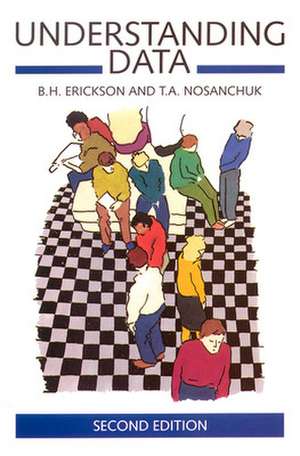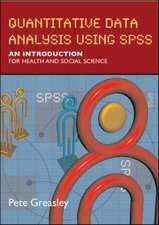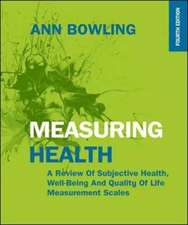Understanding Data
Autor B Erickson, T Nosanchuken Limba Engleză Paperback – 16 sep 1992
Classical statistics were developed to meet the requirements of the natural sciences; as such they reflect the more deductive nature of hypothesis development in these sciences. However, they have offered the sociologists little in the way of techniques for exploring messy data in the context of incomplete theories.
This book attempts to remedy those weaknesses, and it emphasizes exploratory data techniques which sociologists will find useful in their day-to-day research. The primary characteristics of exploratory techniques discussed by the authors are simplicity, resistance and elucidation. Its coverage is from basic statistics up to multiple regression and two-way anova. The inter-relationship between exploratory and confirmatory techniques is stressed, and, through the alternating presentation of each, the students learn to master data analysis: to be and to feel in control.
Preț: 161.15 lei
Preț vechi: 216.47 lei
-26% Nou
Puncte Express: 242
Preț estimativ în valută:
30.84€ • 32.19$ • 25.52£
30.84€ • 32.19$ • 25.52£
Carte disponibilă
Livrare economică 14-19 martie
Preluare comenzi: 021 569.72.76
Specificații
ISBN-13: 9780335096626
ISBN-10: 033509662X
Pagini: 381
Dimensiuni: 153 x 230 x 23 mm
Greutate: 0.52 kg
Ediția:Revised
Editura: McGraw Hill Education
Colecția Open University Press
Locul publicării:United Kingdom
ISBN-10: 033509662X
Pagini: 381
Dimensiuni: 153 x 230 x 23 mm
Greutate: 0.52 kg
Ediția:Revised
Editura: McGraw Hill Education
Colecția Open University Press
Locul publicării:United Kingdom
Cuprins
Understanding data
organizing numbers
understanding numerical summaries
graphs - seeing and setting aside
transforming data
choosing a transformation for several related batches
the random sample
confirmatory statistics
when sigma is not known
comparing several batch levels
y and x and straight lines
unbending
linear regression
analyzing tables
elementary analysis
interaction effects in elementary analyses
two-way analysis of variance
getting more from residuals
partial correlations and causality
multiple regression
appendices
organizing numbers
understanding numerical summaries
graphs - seeing and setting aside
transforming data
choosing a transformation for several related batches
the random sample
confirmatory statistics
when sigma is not known
comparing several batch levels
y and x and straight lines
unbending
linear regression
analyzing tables
elementary analysis
interaction effects in elementary analyses
two-way analysis of variance
getting more from residuals
partial correlations and causality
multiple regression
appendices













